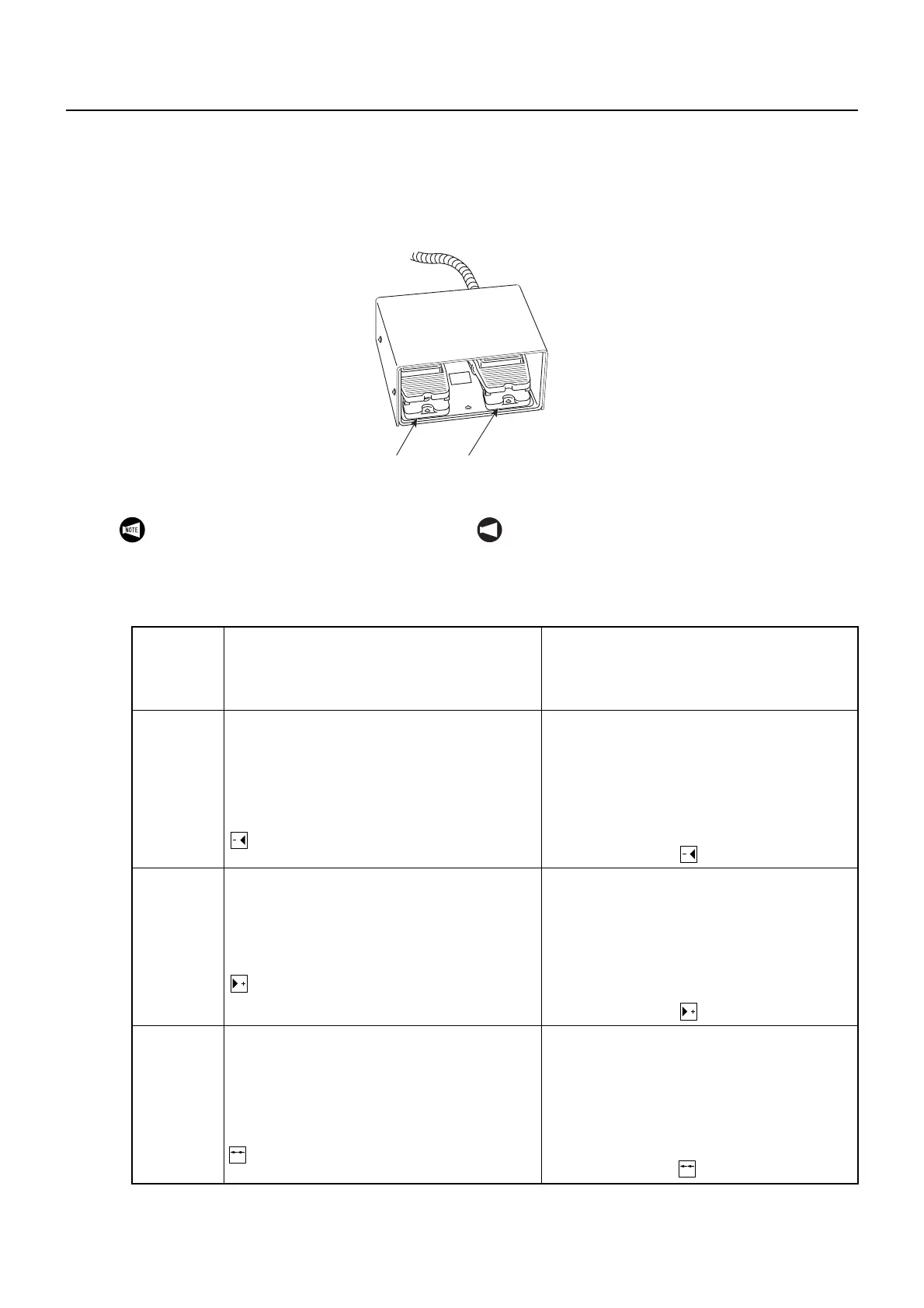1-73BASIC OVERVIEW INTRODUCCIÓN GENERAL
15-3-8 Tailstock (Spindle) IN/OUT Footswitches (Option)
Pedales del contrapunto (husillo) DENTRO/FUERA (opcional)
Footswitches are provided to facilitate operation
when handling heavy workpieces for work with both
hands.
Los pedales sirven para facilitar el funcionamiento cuando se
manipulan piezas pesadas con ambas manos para su meca-
nizado.
<Movement using the tailstock IN/OUT
footswitches>
<Movimiento sirviéndose de los pedales del contrapunto
DENTRO/FUERA>
Tailstock (Spindle) OUT and Inching
Contrapunto (husillo) FUERA y avance lento
Tailstock (Spindle) IN
Contrapunto (husillo) DENTRO
The tailstock (spindle) cannot be extended or
retracted when the spindle (rotary tool) is
rotating and the turret is being indexed.
NOT A
El contrapunto (husillo) no se puede extender o retraer
cuando el husillo (herramienta giratoria) está girando y
la torreta está siendo indizada.
Tailstock
(Spindle)
Contra-
punto
(husillo)
Functions Funciones
Out
Fuera
Keeping the tailstock (spindle) OUT footswitch
(left) depressed moves the tailstock to the
approach position at the rapid traverse rate,
moves it into contact with workpiece at the
inching rate, and then clamps the workpiece.
The thrust for pushing the workpiece can be set
and checked on the TAILSTOCK screen.
[The indicator in the tailstock/spindle 2 button
[Advance] is illuminated.]
Si mantiene pulsado el pedal del contrapunto
(husillo) FUERA (izquierda), el contrapunto se
desplazará hasta la posición de aproximación a
una velocidad de avance rápido, entrará en
contacto con la pieza a una velocidad lenta y, a
continuación, sujetará la pieza.
El empuje de la pieza puede configurarse y
verificarse en la pantalla CONTRAPUNTO.
[Se ilumina el indicador del botón de
contrapunto/husillo 2 [Avance].]
In
Dentro
Stepping on the tailstock (spindle) IN footswitch
(right) moves the tailstock to the return position at
the rapid traverse rate.
To position the tailstock at the zero point, select
the zero return mode, and then keep the tailstock
(spindle) IN footswitch depressed.
[The indicator in the tailstock/spindle 2 button
[Return] is illuminated.]
Si pulsa el pedal del contrapunto (husillo)
DENTRO (derecha), el contrapunto se
desplazará hasta la posición de retorno a una
velocidad de avance rápido.
Para colocar el contrapunto en el punto cero,
seleccione el modo de regreso al punto cero y, a
continuación, mantenga pulsado el pedal del
contrapunto (husillo) DENTRO.
[Se ilumina el indicador del botón de
contrapunto/husillo 2 [Retorno].]
Inching
Avance
lento
Keeping the tailstock (spindle) OUT footswitch
(left) lightly depressed moves the tailstock from
the approach position into contact with the
workpiece at the inching rate.
To clamp the workpiece, be sure to step on the
tailstock (spindle) OUT footswitch (left) more
strongly at the end of the operation.
[The indicator in the tailstock/spindle 2 button
[Inching] is illuminated.]
Si mantiene ligeramente pisado el pedal del
contrapunto (husillo) FUERA (izquierda), el
contrapunto se desplazará desde la posición de
aproximación hasta que entre en contacto con la
pieza a una velocidad de avance lento.
Para sujetar la pieza, asegúrese de pisar más
firmemente el pedal del contrapunto (husillo)
FUERA (izquierdo) al final de la operación.
[Se ilumina el indicador del botón de
contrapunto/husillo 2 [Avance lento].]
TSINC
TSINC

